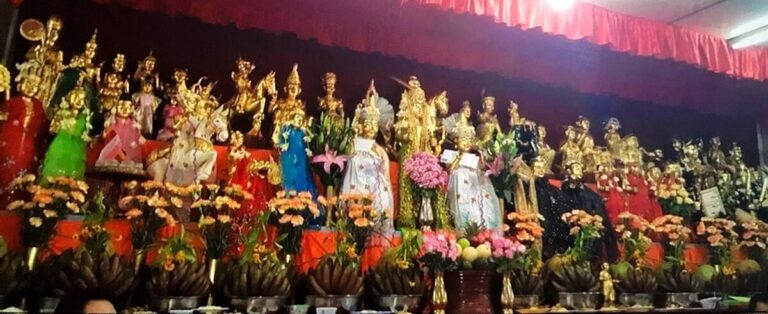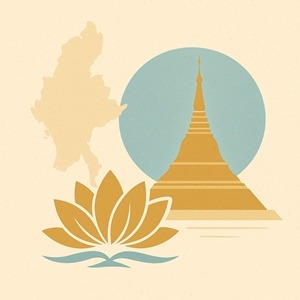
Myanmar is a country rich in tradition, spirituality, and mystery. Beyond the golden pagodas and sacred rituals lies a deep network of superstitions and folk beliefs that continue to shape the everyday lives of millions of Burmese people. Whether it’s choosing the right day to travel, naming a child, or selecting a lucky color to wear, superstitions in Burmese society are more than old customs—they’re part of the living cultural fabric.
———————-
The Roots of Burmese Superstition
Superstitions in Myanmar draw from multiple spiritual and cultural influences:
· Theravada Buddhism, the dominant religion
· Animism and spirit worship (Nat belief)
· Hindu astrology
· Folk traditions passed down orally
This unique blend results in a spiritual worldview where unseen forces are constantly at play, and daily choices may be influenced by monks, astrologers, or ancestral advice.
———————-
Common Superstitions and Beliefs
1. Nats (Spirits) and Offerings
Myanmar has a pantheon of 37 official Nats, or spirits, that are believed to influence human affairs. Nats are both feared and revered. People often leave offerings of bananas, coconuts, and flowers at small shrines to gain protection or favor, especially before long journeys, business openings, or weddings.
Example: Mount Popa is considered the spiritual center of Nat worship. Pilgrims come to pay respects and ask for blessings.
———————-
2. Astrology and the Eight-Day Week
Traditional Burmese astrology divides the week into eight days (Wednesday is split into morning and afternoon), each associated with an animal, planet, and direction.
Key uses:
· Naming children: Based on the day of birth and corresponding letter.
· Marriage matching: Astrological charts determine compatibility.
· Building and travel dates: Auspicious days are chosen for major events.
Example: Many people consult a “Saya” (astrologer) before major life decisions.
———————-
3. Lucky and Unlucky Colors
Each day of the week has a lucky color. Many Burmese wear clothing matching their birth day’s color on important days to attract good fortune.
Day | Lucky Color | Animal Symbol |
Monday | White | Tiger |
Tuesday | Pink | Lion |
Wednesday AM | Green | Elephant (tusked) |
Wednesday PM | Gray | Elephant (tuskless) |
Thursday | Yellow | Rat |
Friday | Light Blue | Guinea Pig |
Saturday | Black | Dragon |
Sunday | Red | Garuda |
4. Beliefs Around Pregnancy and Birth
Pregnant women avoid certain foods and places, such as cemeteries, to protect the unborn child from spirits.
Babies often wear black threads or charms to ward off evil.
The naming ceremony (often held on the 7th day) is guided by astrology.
5. Protection from Evil Spirits
Thanaka: While it has cosmetic and cooling purposes, some believe it also protects against bad spirits.
Charms & Amulets: Small talismans blessed by monks are worn for safety and success.
Oil drops on the forehead: A common practice for protection, especially during illness or spiritual weakness.
6. Taboos and Everyday Superstitions
Do not sweep at night: It may sweep away wealth or good fortune.
Avoid cutting nails after dark: Believed to invite bad luck.
Do not point at pagodas: Considered disrespectful and spiritually offensive.
Do not walk under women’s longyi: This is said to weaken a man’s spiritual energy.
Why Superstitions Still Matter Today
Despite modernization and education, these beliefs remain influential in both rural and urban settings. People might attend a Buddhist ceremony in the morning, consult an astrologer in the afternoon, and make a Nat offering in the evening. For many, these practices offer a sense of comfort, control, and connection to cultural identity.
Superstitions are not seen as contradictory to religion but rather as complementary—part of a deeply layered spiritual life.
Superstitions in Modern Myanmar
Today, you’ll still see:
Business owners seeking auspicious blessings from monks before opening shops
Politicians and public figures using astrology to plan announcements
Families consulting sayas to choose lucky house numbers, vehicle plates, or wedding dates
Even young people, especially during exams or job interviews, often carry charms or follow lucky rituals—just in case.
Conclusion
Superstitions and beliefs in Burmese society are not just relics of the past—they’re an active part of the present. They blend tradition with everyday logic, and in doing so, they add richness to the rhythms of life in Myanmar. For travelers and readers of Myanmar.com, understanding these beliefs is key to understanding the people and the culture.
Whether you’re lighting incense at a Nat shrine or just avoiding unlucky colors, you’ll find that in Myanmar, the seen and unseen are always connected.

